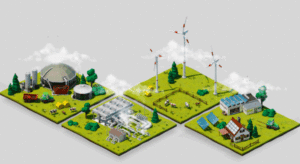The integration of Information and Communications Technology (ICT) and Internet of Things (IoT) into the energy sector has been instrumental in automation along with real-time data processing. The electricity utilization patterns of consumers are also examined by service providers, which helps in enhancing energy efficiency by the participation of services providers and users cumulatively. Energy companies, therefore, undertake DRMS programs and encourage users to modify their utilization pattern during peak consumption hours so as to keep a balance between energy demand and supply and grid reliability. Demand response management system enables utilities to extend customized programs for customers and analyze real time and past performance of DR programs to assess their effectiveness.
In modern energy distribution systems, the roll out of smart grids has expanded the application of advanced metering infrastructure (AMI), enhanced automation in transmission and distribution system, strengthened customer energy management systems, and integration of renewable energy to regular grids. AMI meters extend direct load control capabilities to energy companies as Direct Response (DR) units have direct communication with AMI meters that controls thermostats and residential appliances for load reduction. Thus, the deployment of smart grid is one of the major factors driving the Demand Response Management System market. Although utilities and DRMS providers are largely targeting industrial and commercial customers, smart meters rolled out in several countries are presenting lucrative opportunities for rolling out residential DR programs. Full article: http://www.digitaljournal.com/pr/3241138#ixzz4Z56160h6




